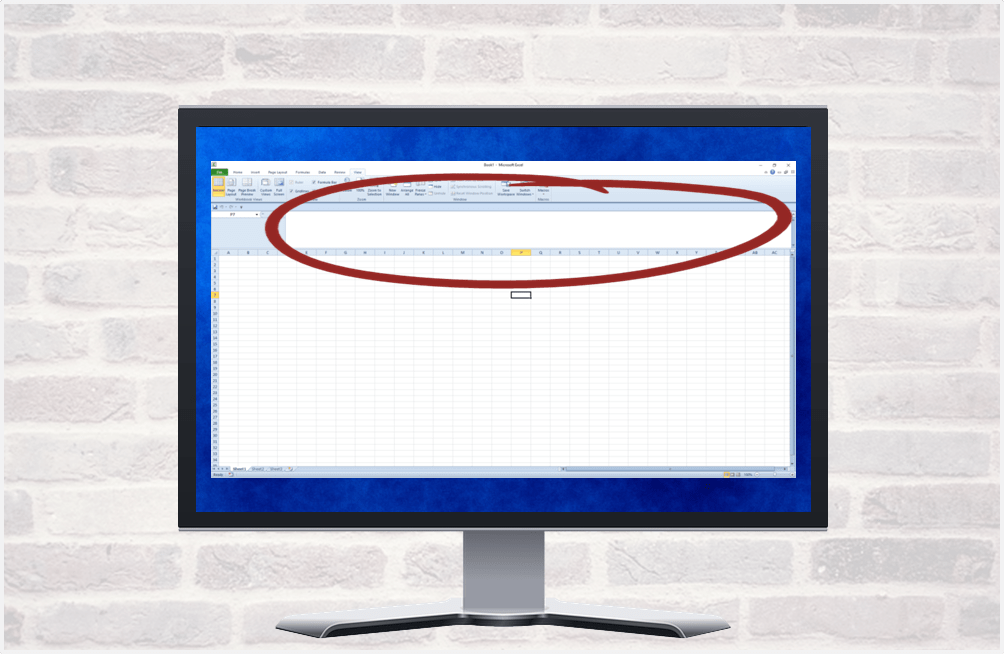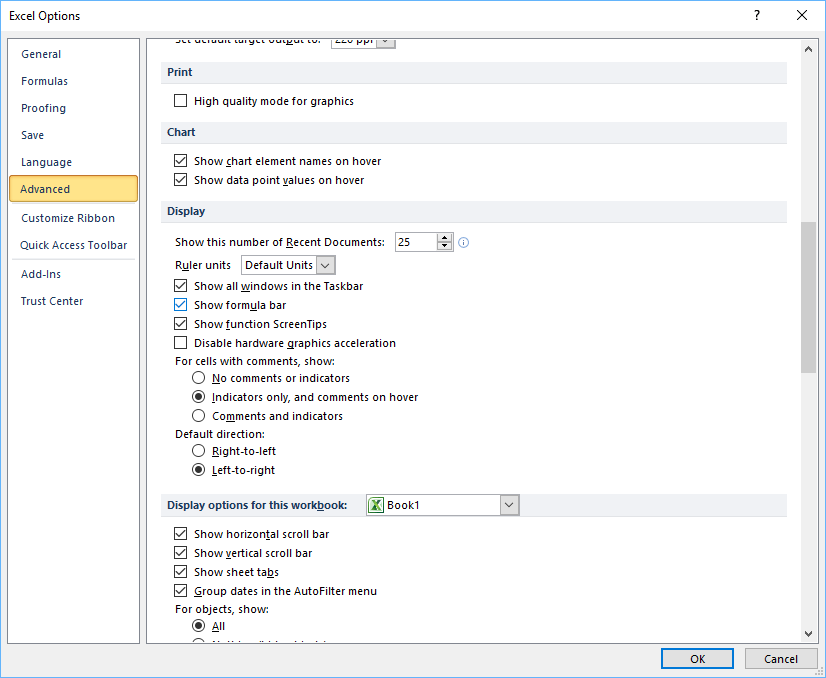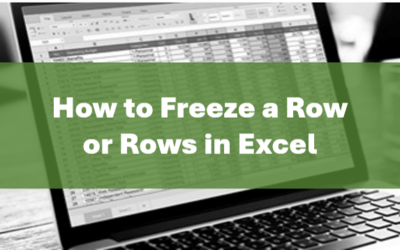Easily Expand or Collapse the Formula Bar in Excel
by Avantix Learning Team | Updated September 14, 2023
Applies to: Microsoft® Excel® 2010, 2013, 2016, 2019, 2021 and 365 (Windows)
In Microsoft Excel, the Formula Bar appears below the Ribbon by default. When you enter data or a formula, it appears in the Formula Bar. If you are writing longer formulas, it can be helpful to expand the Formula Bar using your mouse or a keyboard shortcut.
Recommended article: 10 Great Excel Navigation Shortcuts
Do you want to learn more about Excel? Check out our virtual classroom or in-person classroom Excel courses >
Display the Formula Bar
To display the Formula Bar if it is not displayed:
- Click the View tab in the Ribbon.
- Select the Formula Bar check box.
Alternatively, you can display the Formula Bar using Excel Options:
- Click the File tab in the Ribbon.
- Select Options or Excel Options.
- In the left pane, click Advanced.
- In the right pane, select (or check) Show formula bar in the Display area.
- Click OK.
Expand or collapse the Formula Bar using a mouse
To expand the Formula Bar using a mouse:
- Position the mouse pointer near the bottom of the Formula Bar until an up and down arrow appears.
- Hold down the left mouse button and drag down until the bar is the size you want. Drag up to return it to the original size.
Below is an expanded Formula Bar:
Expand or collapse the Formula Bar using a keyboard shortcut
To expand or collapse the Formula Bar using a keyboard shortcut:
- Press Ctrl + Shift + U.
Insert a line break in a formula
In longer formulas, you may also want to add line breaks to make the formula easier to read.
To add a line break in a formula in the expanded Formula Bar:
- Click in the Formula Bar where you want to insert a line break.
- Press Alt + Enter.
Expanding the Formula Bar is a great way to work with longer formulas in Excel.
This article was first published on August 6, 2016 and has been updated for clarity and content.
Subscribe to get more articles like this one
Did you find this article helpful? If you would like to receive new articles, JOIN our email list.
More resources
How to Use Flash Fill in Excel (4 Ways with Shortcuts)
How to Quickly Delete Blank Rows in Excel (5 Ways)
3 Excel Strikethrough Shortcuts to Cross Out Text or Values in Cells
How to Replace Blank Cells in Excel with a Value from the Cell Above
10 Excel Flash Fill Examples (Extract, Combine, Clean and Format Data with Flash Fill)
Related courses
Microsoft Excel: Intermediate / Advanced
Microsoft Excel: Data Analysis with Functions, Dashboards and What-If Analysis Tools
Microsoft Excel: Introduction to Power Query to Get and Transform Data
Microsoft Excel: New and Essential Features and Functions in Excel 365
Microsoft Excel: Introduction to VBA (Visual Basic for Applications)
Our instructor-led courses are delivered in virtual classroom format or at our downtown Toronto location at 18 King Street East, Suite 1400, Toronto, Ontario, Canada (some in-person classroom courses may also be delivered at an alternate downtown Toronto location). Contact us at info@avantixlearning.ca if you'd like to arrange custom instructor-led virtual classroom or onsite training on a date that's convenient for you.
Copyright 2024 Avantix® Learning
You may also like
How to Replace Zeros (0) with Blanks in Excel
There are several strategies to replace zero values (0) with blanks in Excel. If you want to replace zero values in cells with blanks, you can use the Replace command or write a formula to return blanks. However, if you simply want to display blanks instead of zeros, you have two formatting options – create a custom number format or a conditional format.
What is Power Query in Excel?
Power Query in Excel is a powerful data transformation tool that allows you to import data from many different sources and then extract, clean, and transform the data. You will then be able to load the data into Excel or Power BI and perform further data analysis. With Power Query (also known as Get & Transform), you can set up a query once and then refresh it when new data is added. Power Query can import and clean millions of rows of data.
How to Freeze Rows in Excel (One or Multiple Rows)
You can freeze one or more rows in an Excel worksheet using the Freeze Panes command. If you freeze rows containing headings, the headings will appear when you scroll down. You can freeze columns as well so when you scroll to the right columns will be frozen.
Microsoft, the Microsoft logo, Microsoft Office and related Microsoft applications and logos are registered trademarks of Microsoft Corporation in Canada, US and other countries. All other trademarks are the property of the registered owners.
Avantix Learning |18 King Street East, Suite 1400, Toronto, Ontario, Canada M5C 1C4 | Contact us at info@avantixlearning.ca










